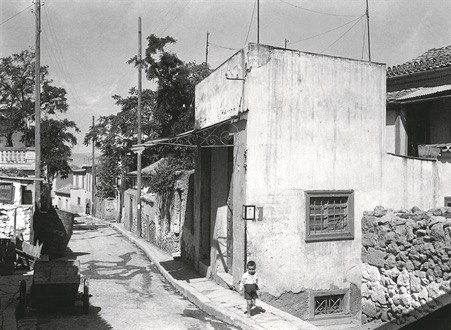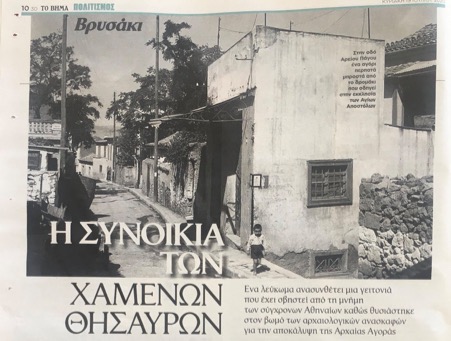
Vrysaki Featured in “To Vima”
A surprise was awaiting readers of the Sunday edition of the Greek newspaper "To Vima."
Within the pages about news on culture, there was an extensive article about one of the most recent publications of the American School of Classical Studies, Vrysaki: A Neighborhood Lost in Search of the Athenian Agora, by Sylvie Dumont, Secretary and Registrar of the Athenian Agora Excavations.

The article, witten by Astrapellou Marilena, provides the reader with detailed information on how one of the old neighborhoods of Athens was "physically" lost during the process of revealing the ancient Agora. Thanks to the extensive documentation by the American School, however, a wealth of information about the neighborhood was preserved, and it is this material that forms the basis of Dumont's study. As Dimitris Filippidis, Professor of Architecture at the National Technological University of Athens, notes:
" It might sound weird but the fact is that we know more about Vrysaki, a now-lost district, than any other old district of Athens. Since 1930 this patrimony existed only in the memories of the old inhabitants and their ancestors. It is remarkable that all this time, it also lived in the archives of the American School of Classical Studies, documented down to the last detail, treated as if it was another excavation project. Everyone was attracted by the important archaeological finds that were under Vrysaki and nobody bothered about this humble district of Athens. Today, thanks to Sylvie Dumont, it comes back to life."
Finally, the article describes how the documentation process took place under a photographer named "Messinesi," who Theodore Leslie Shear, then Director of the Agora Excavations, appointed to record the buildings in the neighborhood.
As stated in the foreword to Vrysaki by Kostis Kourelis, an architectural historian and archaeologist: "The American School proved to be a better agent of demolition . . . as it meticulously recorded what it demolished."
Sylvie Dumont also collected material for her study from Hermann Wagner, the first staff photographer of the German Archaeological Institute.
By analyzing over 1,000 photographs and cross-referencing archival sources and eyewitness accounts, Dumont has been able to reconstruct the neighborhood's streets, shops, houses, names, and faces that otherwise would have been lost to history. They have now been revealed to us in this fascinating account.
For more information on the publication, please click HERE.
